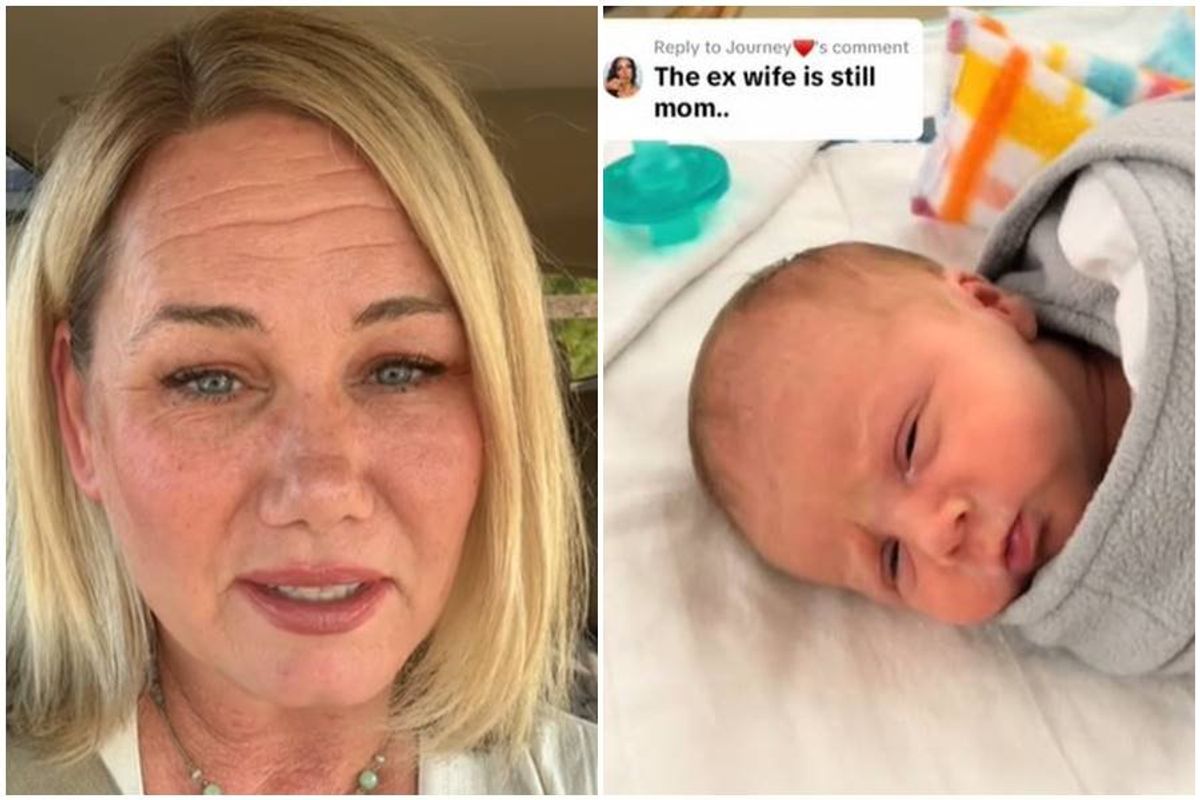Woman goes to huge lengths to adopt husband's ex-wife's baby to save him from foster care
She had lived in foster care and didn't want it for the newborn with no name.

Christie Werts and her son, Levi
Christie and Wesley Werts have taken the idea of a blended family to the next level. When the couple fell in love five years ago and married, they brought together her children, Megan and Vance, and his children, Austin and Dakota.
As of January, the Ohio family has five children after adopting young Levi, 2. Levi is the son of Wesley’s ex-wife, who passed away four days after the child was born. The ex-wife had the boy prematurely, at 33 weeks, and died soon after from drug addiction and complications of COVID-19.
When Levi was born, he was a ward of the state with no first name or birth certificate.
“When I heard about Levi, without hesitation, I said we should take him,” Christie said, according to The Daily Mail, and her reason went far beyond the fact that the child was the half-brother to two of her recently adopted children. “I myself was a foster kid and, although for the most part, I had a great experience, I did not want him going to foster care,” Christie said.
@cjthemom5 Replying to @Journey♥️ Yes, they will always know of her and ill be there for every emotion good or bad. But im also mom, ive been to every game, every doctors appt, sat with them if they needed an ear loved unconditional . I am mom also. #adoption #srorytime #siblings #foryou #loveislove
Before the family knew of Levi’s birth, Christie had a recurring dream about a blue-eyed, blonde-haired boy.
"Before Levi, we had wanted to try to have a child of our own," she told Newsweek. "I'm in my forties, so we knew that we would probably need fertility treatment, so I thought let's just think about it and what will be will be."
The problem was that Levi was in Texas, so the family sold their house and moved to the Lone Star State to go through the arduous adoption process. The situation was further complicated because Levi’s biological father had parental rights even though he had substance abuse problems. The family couldn’t move out of Texas until his rights were legally terminated.
But after a 16-month process, in January 2023, Levi became a legal family member. Christie understands that adopting her husband’s ex-wife’s baby may seem unusual to some people. "It's a lot to process for a lot of people, but honestly, it seems a lot crazier than it was. At the time, it just made sense," she said.
@cjthemom5 Our adoption is official !!! after 17 months!!! #adoption #son #loveyou #ourstory#foryou #fyp
Even though Christie knew in her heart that she must adopt Levi, she wasn’t without reservations. “'If I said I did not [have concerns beforehand], that would not be honest,” she told The Daily Mail. “This was different—I was going to walk into a child I never met and was worried the circumstances would hinder this instant love. But [...] he stole my heart. I also felt this intense need to protect him.”
These days, Levi fits right in with the family, and the rest of the kids are happy to be back to living an everyday life without any caseworkers or inspections.
“He's great, he is the king of the house! We are all very close. He won't understand the journey right now, but someday, I will let him know we fought for him!” Christie said.
This article originally appeared 1 year ago.





 Courtesy of Kerry Hyde
Courtesy of Kerry Hyde Courtesy of Kerry Hyde
Courtesy of Kerry Hyde Courtesy of Kerry Hyde
Courtesy of Kerry Hyde Courtesy of Kerry Hyde
Courtesy of Kerry Hyde Many Americans need to increase their financial literacy.
Many Americans need to increase their financial literacy. Some financial literacy is just math literacy—understanding percentages and probabilities.
Some financial literacy is just math literacy—understanding percentages and probabilities.  Traditional strawberry farming takes up a lot of land.
Traditional strawberry farming takes up a lot of land. A happy couple in their 60s.via
A happy couple in their 60s.via  A happy couple in their 60s.via
A happy couple in their 60s.via